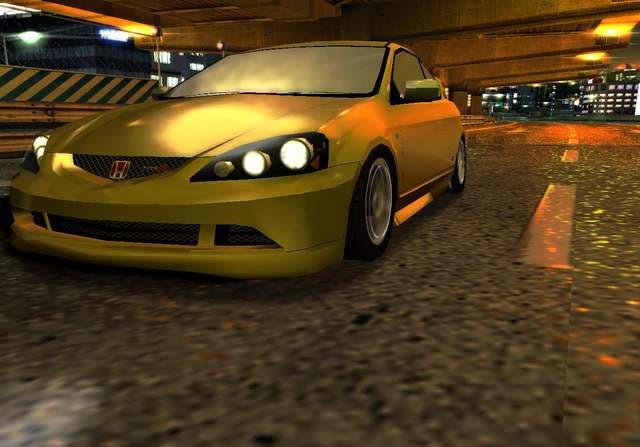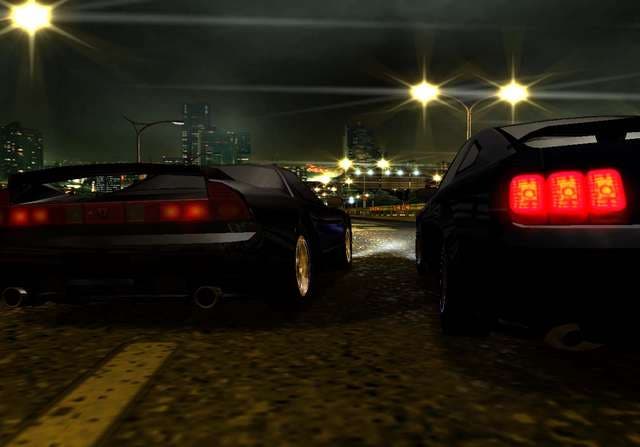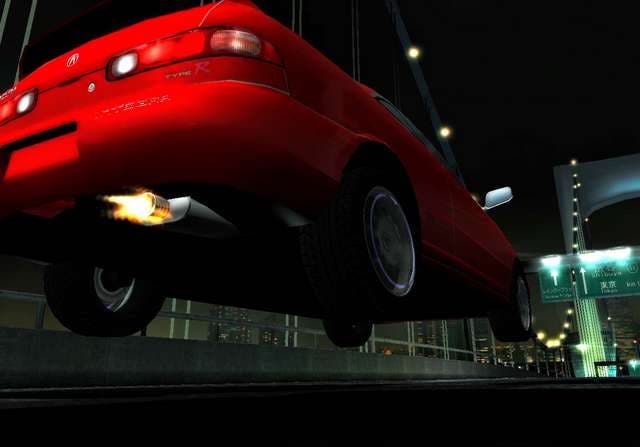The Fast and the Furious: Tokyo Drift
Well, it's half right.
It is, as Elton John once warbled about cartoon lions, a circle of life kinda thing. The first Fast and the Furious movie brought the underground subculture of import car modification into the mainstream, and it didn't take long for the impact to trickle down to our little gamesy paddock. Established racing titles suddenly went all hip and urban, as if they'd always had a neon green rear spoiler in the garage but had only now realised what to do with it. Yes, Need for Speed - we're looking at you.
As the circle of life turns a little bit further, and having influenced a whole genre, The Fast and the Furious finally gets turned into a videogame itself. Somewhat predictably, the result feels several years too late.
We are the mods
Apparently "inspired by the events" of the third, and largely ignored, movie in the series the Hollywood brand is little more than a recognisable hook from which to hang a reasonably solid but uninspired street racing game. You arrive on the streets of Tokyo, buy a crap car and set about winning races in order to customise it into something that can earn you nuff respeck and ‘ting. Because that's how Da Kidz talk, innit.

In its favour, TFATF has an amusing acronym and an impressive array of upgrade options. Possibly too impressive, since anyone not intimately familiar with the mechanics of modding cars will soon be lost. It's commendable that the game really gets into the nitty gritty of tuning and compatibility, often feeling like a vehicular spin on Armored Core's famously detailed construction mode, but there are precious few concessions to those who don't know the lingo already.
The frequent loading screens offer random advice, but it's just not enough. Such ignorance won't hold you back too much to start with, as you romp through a series of challenges against embarrassingly easy racing crews, but to really progress you'll find yourself swapping parts and tires to suit each race type and opponent and the hardcore gearhead requirements feel at odds with the broad arcade styling.
Also deserving of praise is the drift system which, while not as revolutionary as promised, is certainly one of the better on the market. It places the game rather awkwardly somewhere between Ridge Racer and Out Run 2 but, much like the customisation options, it does require a certain amount of expertise to truly appreciate. With control skewed so heavily to hurling your car around corners in long rubber-burning arcs, taking gentle curves and even straights can prove troublesome until you get used to the twitchy handling or work out which combination of tires and upgrades is best for grip or drift racing.
The song remains the same

Despite these twin positives, the experience as a whole fails to excite. There's a half-hearted attempt to mimic Test Drive Unlimited's free-roaming approach, but whereas Atari's effort provides a sizeable tropical environment that is fun to simply explore, the dreary featureless freeways of TFATF are little more than bland corridors to be traversed between upgrade shops, showrooms and race hotspots. You'll soon use the map to simply warp between locations rather than driving there in real time, if only to avoid the wretched soundtrack of generic shouty alterna-rock and limp hip-hop. There only seem to be about ten songs in the whole game, so they swiftly go from mildly annoying to OH PLEASE GOD NOT THIS ONE AGAIN within the first hour of play.
It certainly doesn't help that the graphics are consistently murky and blurry, with the road ahead merging into an indistinct soup of neon lights and grey-green roads. The game's palette is drab, and the urban environments lacking. You could just as easily be rattling around Spaghetti Junction rather than Tokyo's Wangan freeways. The rural mountain tracks offer a small amount of variety, but you soon get tired of running the same checkpoint-to-checkpoint sprints up and down indistinguishable streets.

The look of the cars is passable, with the obligatory spread of licensed models, but visually the game reeks of 2001 rather than 2007. With Test Drive doing an impressive job of faking hi-def sheen on the PS2, this is left looking more than a little gruesome by comparison. There's also a persistent camera shake, presumably in an attempt to approximate the over-the-top adrenalin rush of the movie races, but here it just irritates. Coupled with the muddy graphics, you never feel entirely sure where the track is going - and worse, you never really care.
Die-hard followers of drift racing and modification will applaud the unforgiving accuracy of the game engine but, given the importance they tend to place on shiny shiny good looks, they're also the people most likely to be turned off by the scrappy presentation. With so many rival titles already doing the same thing, and doing it better, The Fast and the Furious is a decent but utterly non-essential addition to the PS2 racing line-up. It's certainly fast enough, but the fury is more than a little contrived.

